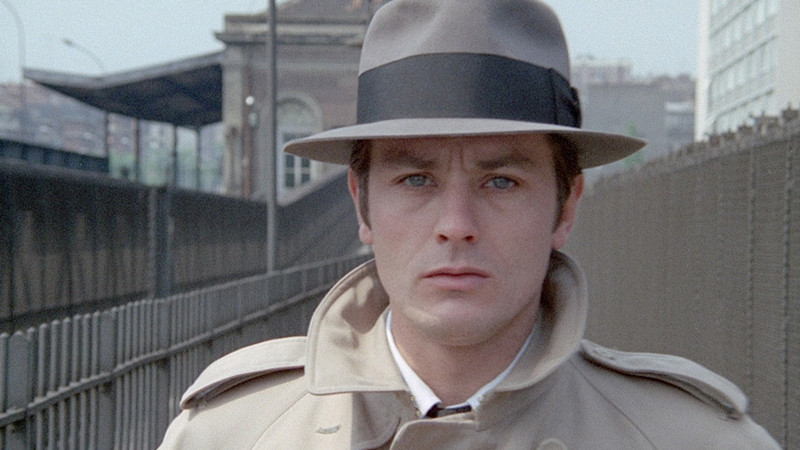
If there’s one thing that makes film a life long passion, it’s the constant sense of discovery that comes along with it. For an art form that, relatively, hasn’t existed for too long, it’s one that constantly and quickly evolves, with easily traceable threads and influences eventually leading to a plethora of under seen gems.
While most contemporary filmmakers will cite their specific film influences for their latest pieces, the discovery doesn’t stop there. In fact, the creative process for these films is often so long and so well researched that some almost unconscious cinematic touchstones slip into the alchemy of the movie making process. For some, this has happened so frequently over history that these unsung masterpieces go criminally overlooked.
It’s an incredible shame, as the further back these films get pushed through the collective cinematic memory, the less modern cinema has to draw from, with a number of the picks below still proving incredible relevant today, for better or worse. With the modern films on this list being either box office hits or ones with devoted followings, their fans are sure to love the under discussed classics that influenced them, directly or indirectly.
1. The Day Of The Locust (1975) / Once Upon A Time In Hollywood (2019)
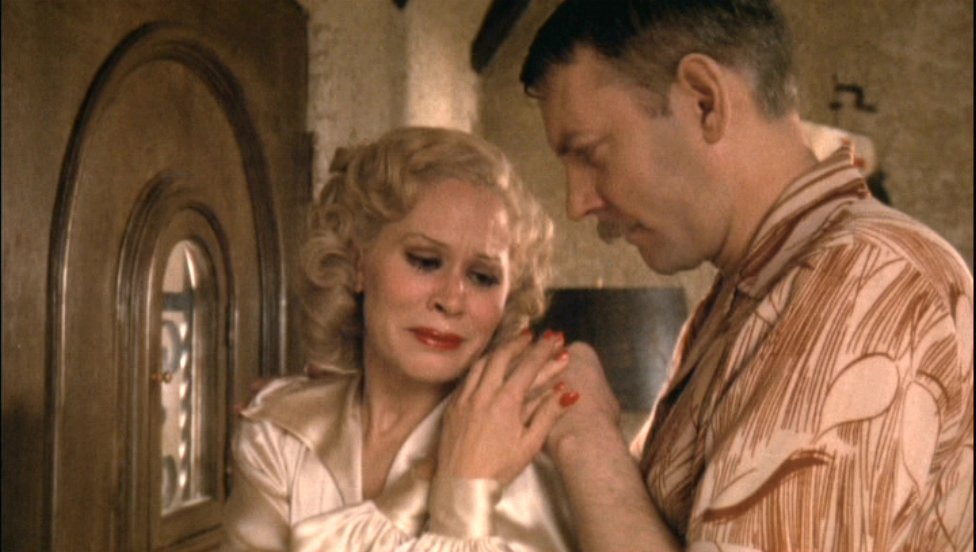
The most popular example of a contemporary filmmaker that overtly revels in endless film discovery is undoubtedly Quentin Tarantino. The former video store employee and all round cinematic encyclopaedia prefaced the release of his latest, a 1969 period piece about the film industry itself, with a list of era-appropriate films that directly influenced it. However, while those 10 picks worked to engulf the audience in his heightened reality of mid century Hollywood, they almost pale in comparison with the film’s similarity to this forgotten 70’s masterpiece, which itself in set in a past version of Tinseltown, The Day Of The Locust.
Centred around a diverse group of film industry hopefuls fronted by Karen Black’s stand out performance as the troubled, delusional and ultimately unsuccessful starlet Faye Greener, the film is an exciting, horrifying and no-holds-barred exploration of 1930’s Hollywood. Seductively demonstrating dizzying highs up front, the further director John Schlesinger digs into the post war L.A. landscape, the constantly beating California sun begins to shine it’s light on the horrors that Hollywood enables, rather than the dreams it promises.
With similar ‘Hangout’ and intersecting storytelling techniques to Once Upon A Time…, both films hit on one particularly raw nerve; the notion that these characters are adamant that Hollywood owes them something. For DiCaprio’s Rick Dalton, it’s the return to former T.V. cowboy glory, and for Black’s Greener, it’s the promise that her good looks and positive attitude will make her a star. And, in that, when things don’t go to plan for them, both films uncover the true ugly nature of the film industry, and the inherent ugliness of it’s protectors.
This exploration of broken dreams and expanding egos is such a distinct thread through these two films that it’s power in the storytelling leads both to culminate in equally shocking climaxes. Aside from the usual glitz and glamour of other films that deal with the subject, these two unlikely twins manage to brilliantly illustrate Hollywood’s dark side, in shocking and incredibly entertaining cinematic ways.
2. The Killing Of A Chinese Bookie (1976) / Uncut Gems (2019)
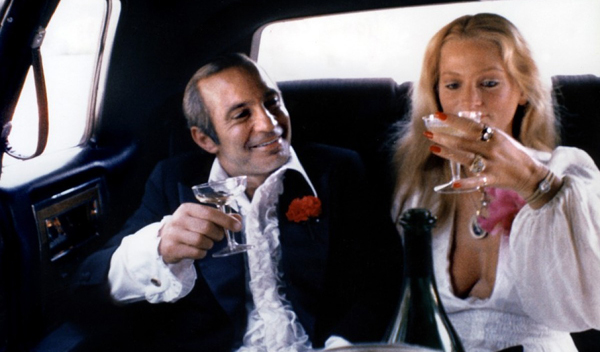
Master of a naturalistic, almost cinéma vérité style, actor and director John Cassavetes was a staple of independent American filmmaking for nearly 3 decades, with The Killing Of A Chinese Bookie being a prime example of his signature style, influencing independent filmmaking for decades to come.
One of the clearest flag flyers of this aesthetic, filmmaking duo the Safdie Brothers, grew to prominence through the likes of their similarly gritty independent dramas, with the culmination of their style and popularity presented in their latest, which stars Adam Sandler in a truly transformative lead role as a jeweller and gambler who gets into deep trouble. Though a handmade, guerrilla style Big Apple drama is not exclusive to these filmmakers, what sets both Cassavetes and the Safdies apart is the sense of heart ingrained into their lead characters.
Cassavetes’ film follows Cosmo Vittelli, a L.A. strip club owner whose gambling troubles land him in the predicament of paying off his debt through the assassination of a mafia protected bookie. While his profession and vices seem inherently seedy, Ben Gazzara’s fascinating lead performance effectively illustrates the fact that Vittelli is anything but. Rather, he takes great care in the art of burlesque, and deeply cares for all of the women that work for him, treating them with the upmost respect. It’s only when his weaknesses get the better of him that he’s forced to blend into the gritty criminal world surrounding his career, which is constantly undermined by his club patrons.
This keen sense of character development is perfectly exemplified in Uncut Gems’ central character Howie, who, like Vittelli, exists in a seedy environment with a big heart (though the jewellery industry is not necessarily seedy on a surface level, the mobster involvement and vast amounts of money traded therein put it on a similarly dangerous level to Vittelli’s strip club). For Cosmo, it’s his female dancers, and for Howie, it’s his family. Their shared gambling vice works as a brilliant juxtaposition for both their careers and morals.
Unlike the previous pick, it’s no secret that the modern filmmakers here are indebted to this historic counterpart. Having sited Cassavetes as a major influence, it’s clear that Uncut Gems shares stark similarities with The Killing Of A Chinese Bookie. However, the film still goes overlooked by modern audiences. With a tight script, skilful performances and intense moments of dread, it’s certainly a film that could easily engage audiences today, with it’s amazing filmmaking having lost none of it’s power over time, much like the rest of Cassavetes’ timeless work.
3. The Big Fix (1978) / The Kid Detective (2020)
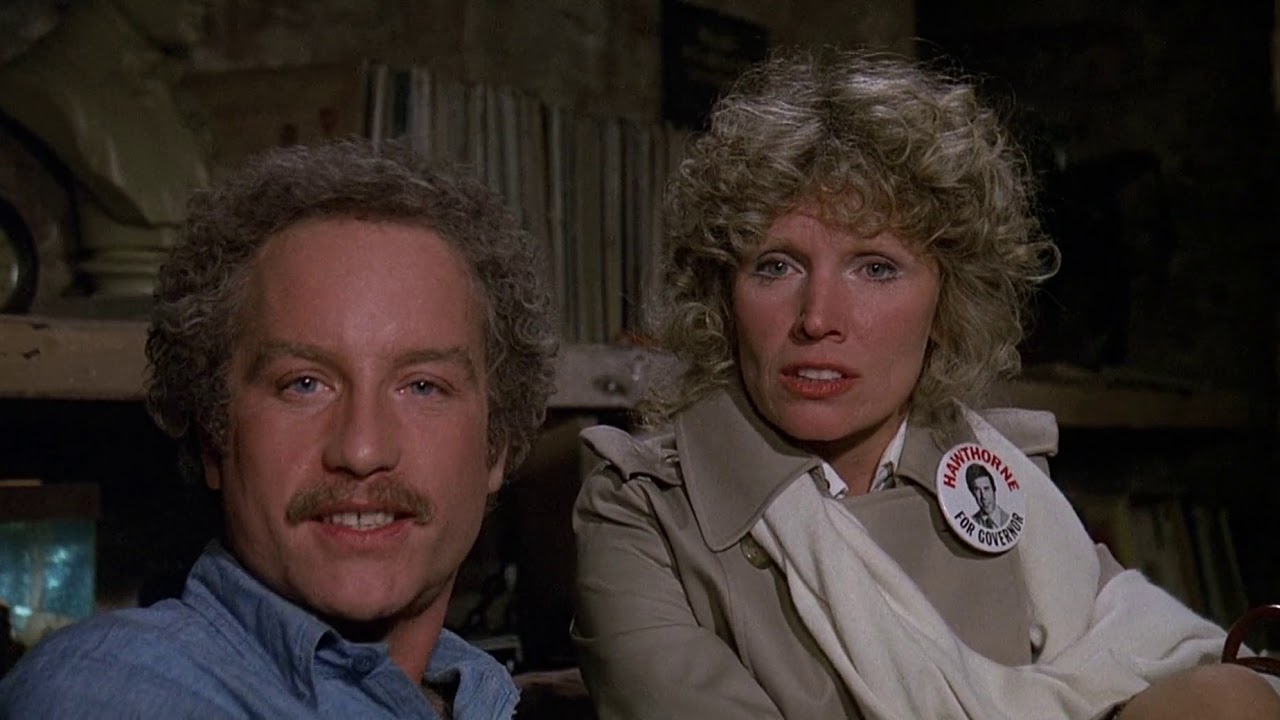
Rather than become outdated and stagnant since it’s 1940’s heyday, noir is an ever evolving genre that has taken on many guises through the decades, and incorporated other genres within it. What made Evan Morgan’s The Kid Detective the sleeper hit of last year was not only it’s brilliantly funny performances and excellent script, but the fact that it proved that noir, or at least, noir with a comedic twist, is far from dead, with a touching and relatable central plot.
And yet, this subversion on the classic genre is nothing new. Though many may rightly point to the likes of The Big Sleep and The Long Goodbye as touchstones for a detective story centred around an affable gumshoe, it’s a great shame that they tend to overlook the witty Richard Dreyfuss caper, The Big Fix.
Following Dreyfuss’ Moses Wine, a childlike P.I. whose former life as a student radical embroils him in a web of political intrigue, the film surrounds it’s central character with great performances and a twist fuelled plot laced with childlike whimsy. Yet, there is something much darker right at it’s core. Coming three years after Dreyfuss’ box office success with Jaws, the film is very specific in it’s fun use of the noir genre as a sort of epitaph to the dream of the 1970’s, as impending, politically charged capitalism looms large over the characters we’re used to, just like Moses in noir films of that era, who are powerless to stop it. Though not immediately obvious, the further one reads into the charming caper, the more one realises that it achieves almost exactly what it’s modern counterpart sets out to.
The Kid Detective put’s it’s main character’s childlike worldview right at the forefront, with Adam Brody’s Abe Applebaum being a former ‘kid detective’ who has continued his adolescent sleuthing into his 30’s. With this, just like The Big Fix, director Evan Morgan uses the noir genre as a vehicle to demonstrate a longing for the past, through a relatable yet hopeless lead. Moses Wine’s mother and young son even pop up intermittently, really pushing this point home. What makes The Kid Detective so engaging and touching is it’s big heart, and Dreyfuss managed to bring one to the genre over 40 years before.
4. Putney Swope (1969) / Sorry To Bother You (2018)
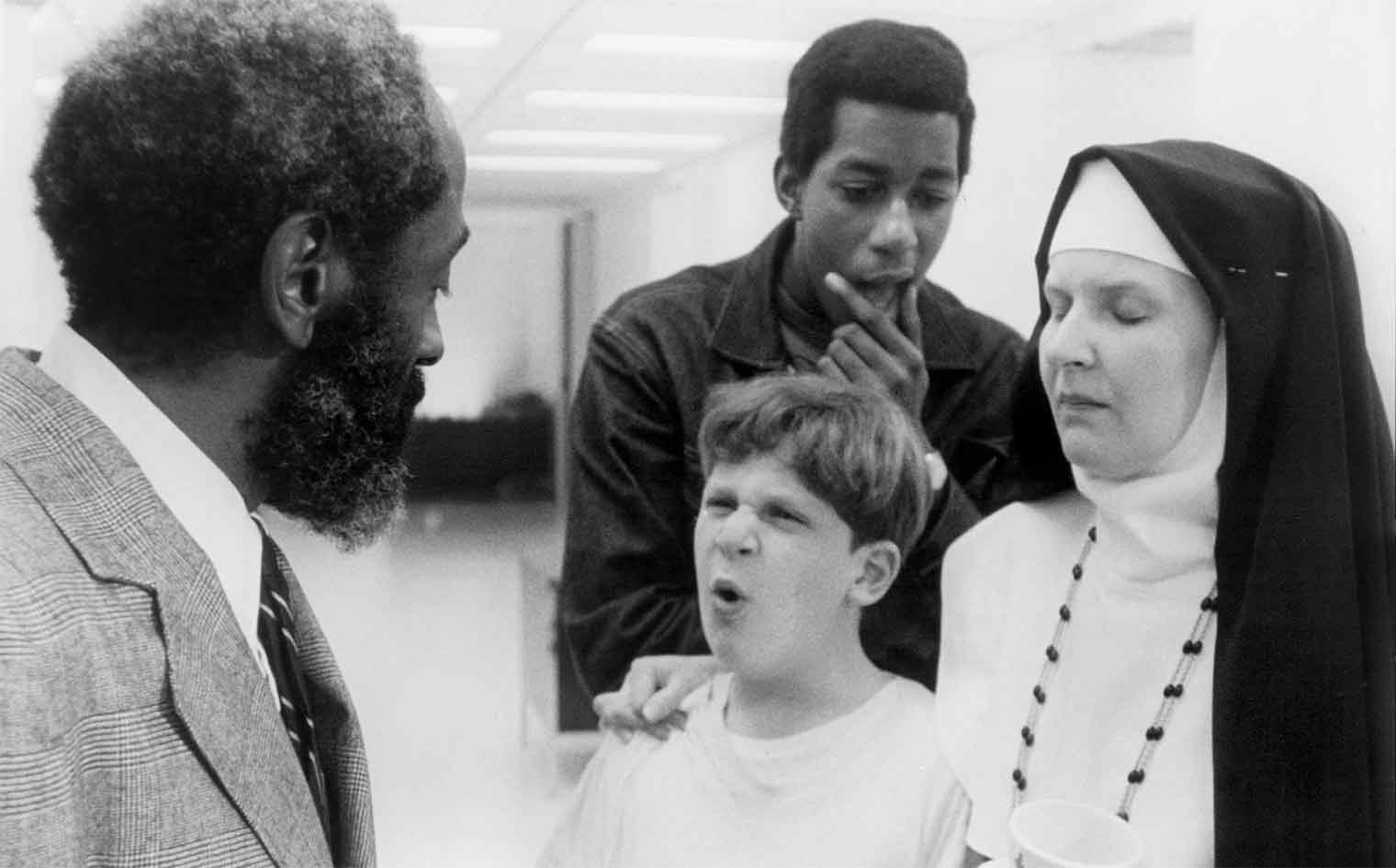
Robert Downey Sr’s send up of mid century consumerism is as timeless as it is sharply clever. It’s concept of a black man becoming the head of a top advertising agency in the midst of a tumultuous and increasingly conservative America is one that could easily play out in 2021, with the results likely to be just as shocking. And, despite Sorry To Bother You director Boots Riley claiming to actually to have never seen Downey Sr’s underground counterculture classic, the two films would make a perfect double bill.
With both featuring a workaday black man suddenly thrust into a position of power over a white dominated industry, Downey Sr and Riley effectively show the dichotomy of life on the other side, surrounded by yes men, corruption and greed. While Sorry To Bother You, of course, takes on a surrealistic science-fiction element toward the end to really bring home the absurdity of the situation, for it’s time, it could be said that Putney Swope becomes just as surreal. It expertly and critically mimics popular advertising tropes at the time with black actors (cleverly presenting those snippets in colour with the rest of the film in black & white), and replaces most of the white agency workers with Black Panther esque guards as the titular character begrudgingly calls out the injustice of American mid century consumerism head on. Again, a theme prevalent in both films.
For Swope, this comes in the form of cutting all ties with cigarette, toy gun and alcohol accounts with the firm, as he realises, or perhaps, realised well before and was powerless to do anything about it, that they do nothing but kill the public and indoctrinate the youth. It’s really just a stones throw away from Cash’s discoveries in Sorry To Bother You, in which he realises, once admitted to a higher level within his workplace after utilising his ‘white voice’, that the call centre he works for is secretly an arms dealer, that uses slave labour fuelled by forced drug enhancement. While Putney Swope ends with the counterculture movement fully on the titular character’s side, Sorry To Bother You’s Cash, worryingly, takes a little longer to garner public support, a key difference that ironically pairs the films well in comparative retrospect.
Though nearly half a century apart, both films carry a strikingly similar message, and execute it in deliriously inventive ways.
5. Who Is Harry Kellerman And Why Is He Saying Those Terrible Things About Me? (1971) / I’m Thinking Of Ending Things (2020)
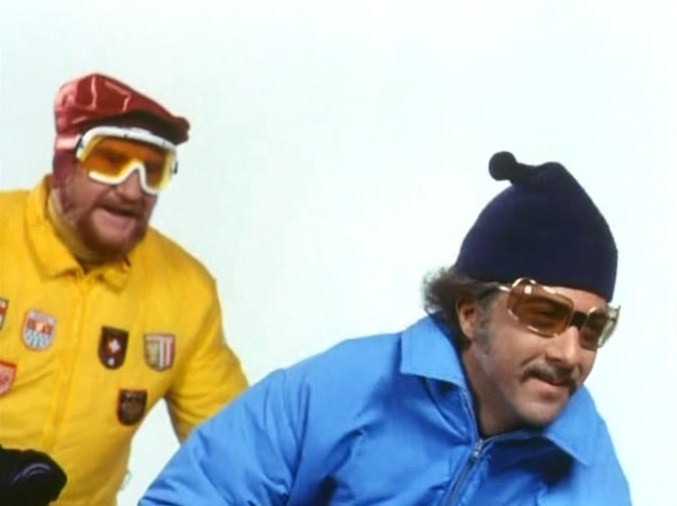
‘Stream of Conciseness’ style character studies usual prove to be incredibly polarising films, and are increasingly seldom seen today. Characterised by an almost incomprehensible, haphazard sequence of events that are somehow related to the characters’ train of thought, it’s very loose narrative structure has worked to strengthen some character studies, and totally alienate audiences from others.
With director and screenwriter Charlie Kauffman’s first film in 5 years, this story telling method was thrust back into the mainstream last year, with many diving into the convoluted tale of a break up and a lonely man’s psyche through Netflix’s wide distribution of I’m Thinking Of Ending Things. What seemed to connect audiences to it was Kauffman’s intriguingly revised narrative structure and great performances, particularly by leads Jessie Buckley and Jesse Plemons, that realistically and surrealistically relayed the emotions of a relationship break up, in a film that effectively took the audience on a gripping journey to make sense of the seemingly unrelated threads toward a shocking climax.
But one film, released nearly half a century prior that didn’t enjoy such a wide release, succeeded in a more effective way, and has gone criminally under seen. Centred around lonely songwriter Georgie (Dustin Hoffman), director Ulu Grosbard (who would team up with Hoffman again for the similarly under appreciated Straight Time) gives the audience one simple task; to uncover the identity of Harry Kellerman. Crucially, for the most part, he leaves this up the viewer, providing them with brilliantly placed clues among the ‘Hangout’ style plot. Over the course of one day, we see Georgie call old girlfriends, meet new ones, jump off buildings, ski mid air… among other surreal events. Grosbard truly wants the audience to get inside of Georgie’s creative mind as it wanders from his worries toward incoherent fantasies of freedom from persecution at the hands of the unseen aggressor.
Both films centre around an incredibly layered central character, with Plemons’ Jake revealing his personality through seemingly random poetry, dancing and film criticism, just like Georgie does through elaborate escapism. But where Grosbard succeeds over Kauffman is the fact that, although just as sparse and haphazard in it’s structure, the former manages to deliver deeper meaning to justify the surrealism, in turn delivering a much more interesting character study. Both are similar in concerning lonely men who are simply trying to find themselves through expressive mindsets and visually brilliant imaginations, but differ when it comes to an engaging, streamlined and powerful plot.